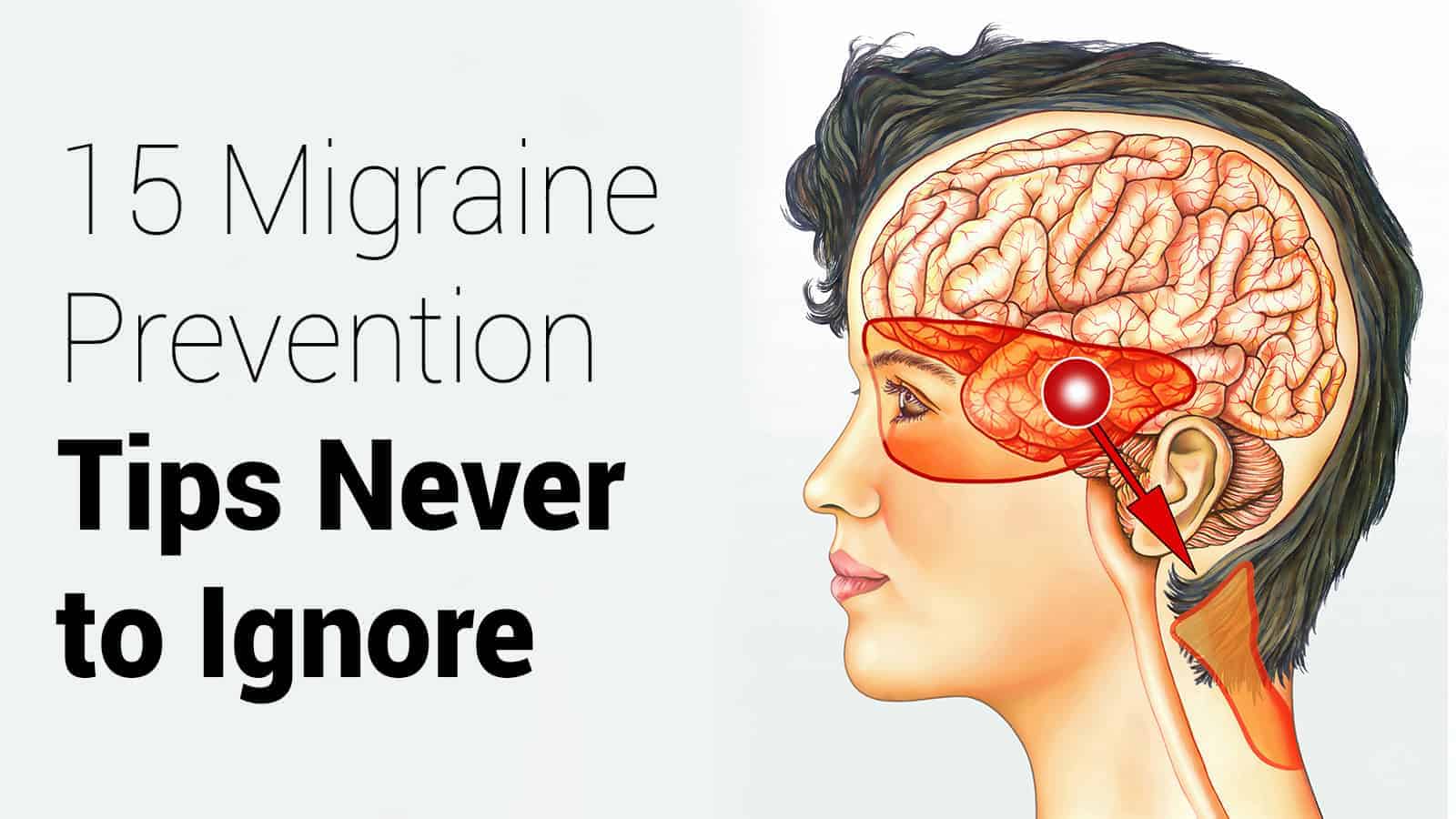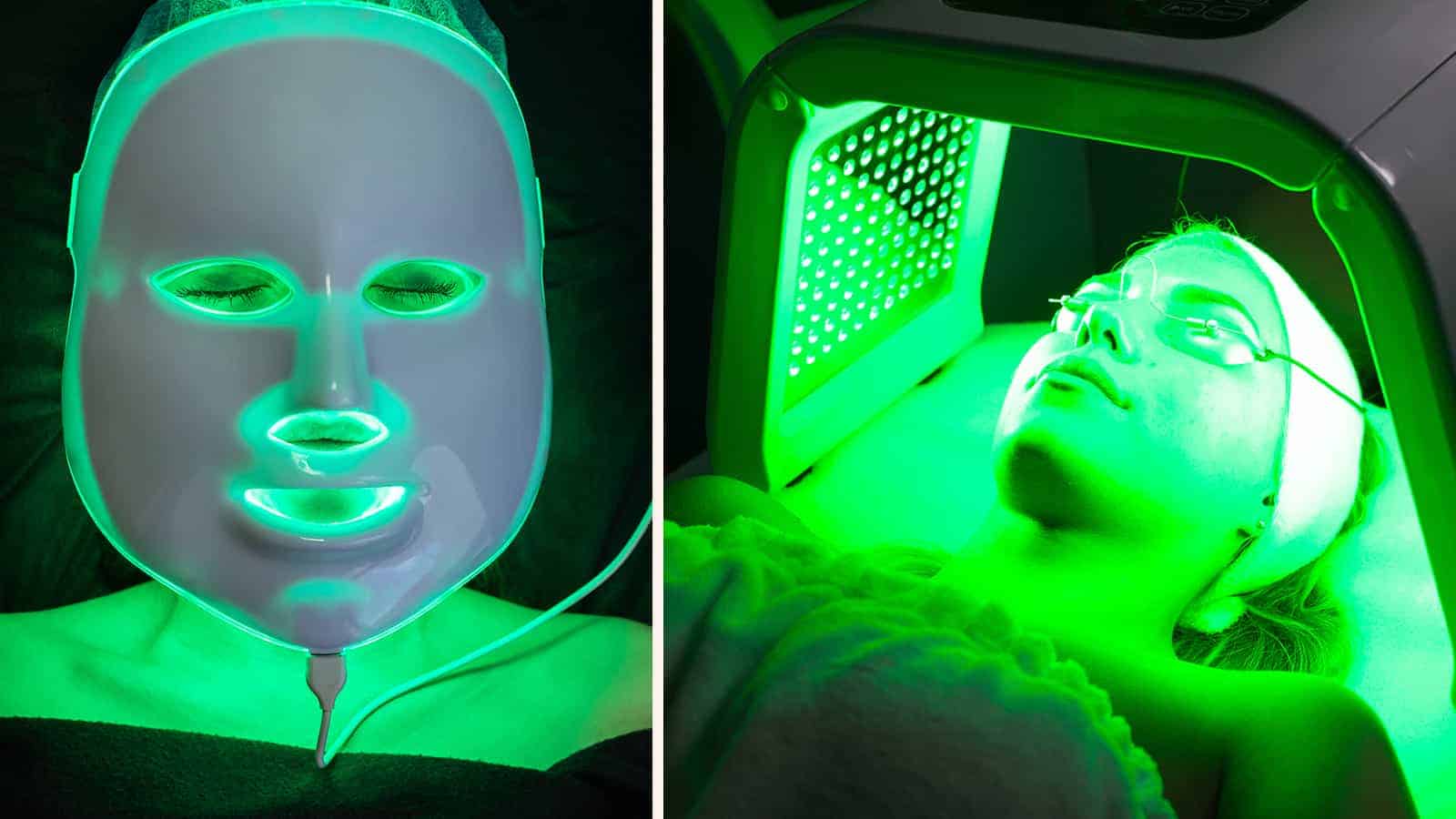Do you struggle with chronic migraines? The Migraine Research Foundation estimates that at least 39 million men, women, and children in America have this debilitating neurological disorder. Of the eleven types of headaches a person can have, a migraine is one of the most unbearable.
Ask anyone who has suffered from these pounding head pains and they will tell you that they would do anything possible to stop the suffering they feel. Thankfully, when it comes to keeping these headaches at bay, prevention is the key.
15 Ways You Can Prevent Migraines
If you could eat specific foods, exercise for so many hours, or stop drinking soda, would you do it to prevent a migraine? Here are some things that you can do to help prevent these painful headaches.
1. Recognize Your Triggers
If you struggle with migraines, you’ve probably noticed a pattern. Are there things that trigger them? Common triggers include eating certain foods, bright light, excessive noise, smells, and stress. Learning to avoid specific triggers can be the key to migraine prevention.
2. Keep a Daily Journal
How do you recognize your migraine triggers? One of the best ways is to keep a daily journal, and it needn’t be elaborate. You can write it on paper or keep it as a running document on your computer.
If you journal each day, you can compare the days that you have migraines to those symptom-free days. Take note of the food you eat, where you are, and any other significant details. Even a change in weather can be something that brings about pounding head pain.
3. Maintain a Healthy Diet
According to reports from the American Migraine Association, your diet can play a pivotal role in migraine prevention. Part of it is avoiding specific foods that trigger your pain. Also, they recommend that you follow the healthy diet guidelines as set by the USDA and your primary healthcare provider.
Skipping meals to lose weight isn’t a good idea, especially if you have migraines. The AMA warns that many people trigger migraines by not eating proper meals. Drinking enough water to stay hydrated is another issue that can help in migraine prevention.
4.The Sound of Silence
A study published by the National Institutes of Health states that hypersensitivity to noise is a hallmark symptom for migraine patients. Not only can noise aggravate a current migraine, but it can also trigger a new occurrence. If you are sensitive to sound, you may consider wearing comfortable earplugs when you sleep or are in a noisy environment.
5. Exercise Every Day
When you are trying to balance your family, career, and other social responsibilities, it’s easy to push your needs to the back burner. Do you get enough exercise? A study from the National Heart, Lung, and Blood Institute says that a lack of exercise can contribute to being overweight or obese in addition to poor eating habits.
Regular exercise may not only benefit your waistline, but it may also help migraine prevention, states a study published by Migraine Trust.org. The study mentions that strenuous exercise may cause migraine pain for some people. However, they also point out that moderate exercise has shown positive results for preventing one from occurring.
Some of the recommended exercises include walking, swimming, riding a bike, or even dancing. Your chosen workout should be done for at least 30 minutes a day, three times per week, for optimal results.
6. Reduce Your Stress
If you need another reason to reduce stress in your life, migraine prevention might be something to consider. Although you need some pressure to learn, grow, and encourage creative thinking, too much can affect your well-being. An article from the National Institute of Mental Health warns that chronic stress is linked to coronary disease, hypertension, diabetes, depression, and anxiety.
Another study on migraines published by the National Institute of Health says that chronic stress is also a common trigger. Some subjects were able to reduce their stress and had fewer migraines and less intensity. Try lowering your stress levels with meditation, journaling, or taking walks to enjoy nature.
7. Get Enough Sleep
Do you get enough sleep, or do you feel like you’re always in a brain fog? The American Sleep Apnea Association states that at least 50-70 percent of the people in the United States have some type of sleep disturbance.
Sleep deprivation is often a migraine trigger. What could be worse than being exhausted and having excruciating head pain? Getting more sleep may be your answer to relief. However, getting too much sleep can also trigger a migraine.
Maybe you oversleep on the weekends to make up for sleep deprivation during the week. You shouldn’t sleep in past 8-9 am or you run the risk of developing a headache.
8. Try a Little Caffeine
Many people aren’t ready to face the morning without their usual cup of coffee. Not only does it have an enticing flavor and aroma, but it provides caffeine for a boost of energy. One cup of Joe has about 180 mg. of caffeine.
While caffeine may be a migraine trigger for some people, others may benefit from it, says a study from the National Institute of Health. Have you ever got a headache and felt a little groggy from lack of caffeine? In the same way that drinking a cup of coffee can ease those symptoms, it may help you for migraine prevention.
9. Use Aromatherapy
For some people who battle migraines, certain scents can trigger one almost instantly. Perfumes, air fresheners, scented candles, cigarette smoke, and sometimes aromas from food are the usual culprits. This sensitivity is called osmophobia, and 95% of migraine patients have it, says the American Headache Society.
However, aromatherapy may also be possible migraine prevention, states an article from migrainedisease.org. The medically reviewed article discusses using pure essential oils to prevent migraines and ease some of its symptoms like nausea and congestion.
If you’re not sensitive to smells, aromatherapy may be worth your while. Some of the essential oils the article suggests are peppermint, lavender, or chamomile. You can use them in a diffuser or blend them with a carrier oil to rub on your temples and wrists.
10. Apply a Cold Pack
A classic remedy for headaches and migraines is a soothing ice pack on the forehead. At the onset of a migraine, consider taking a rest and lying down with a cool compress. Many pharmacies and department stores sell reusable gel packs to freeze and have on hand as needed. You can also use the old-fashioned ice bags filled with ice cubes.
11. Turn Out the Lights
Another infamous migraine trigger is bright lights. Glaring lights in stores, at work, or other public buildings may be enough to set your head spinning. An article from the American Migraine Association says this trigger is called photophobia, and even outdoor sunlight can be a problem.
Avoiding too much bright light may help you have fewer migraines. If you are outdoors, consider wearing UV protection sunglasses. If you already have a migraine, you may find relief by lying down quietly in a dark bedroom.
12. Avoid Foods that Trigger Your Migraines
Certain foods are also notorious for causing migraine symptoms. Since all patients are different, you may be sensitive to one food that another migraine patient isn’t, and vice versa, states an article from the National Headache Foundation.
The article mentions a low tyramine diet that many migraine specialists recommend to their patients. Tyramine is an amino acid that is broken down in many aged or fermented foods. The article recommends avoiding some of the common foods that include anything pickled or fermented, nuts and seeds, alcohol, and chocolate.
13. Try Hypnosis
Before you dismiss hypnosis as possible migraine prevention, you may be interested in a study published by the National Library of Medicine. It provides compelling evidence that hypnosis may help those who have chronic pain, including migraines.
14. Cultivate a Positive Attitude
Did you know that there’s a strong link between your mental health and migraines? The American Migraine Foundation states that 20 percent of migraine patients also have depression, and at least 30-50 percent of these patients battle anxiety. The article suggests that treating patients’ depression and anxiety can also affect the severity of migraines.
Maintaining a positive attitude is linked to treating depression symptoms. If you are treated for your mental health issues, it may help you have fewer migraines. Discuss the possibilities with a mental healthcare provider.
15. Seek Support
Experiencing chronic migraines can be enough to wear you down physically, mentally, and spiritually. Having a strong support system may help you cope with the condition. Enlist your family and close friends for the assistance you need in dealing with this debilitating condition.
Final Thoughts on Migraine Prevention
There may not be a cure for painful migraines, but there are some things you can do to prevent or minimize their occurrence. Being a migraine patient is a difficult road to travel, but you aren’t alone. Talk to your healthcare provider or migraine specialists about these and other preventions.


















